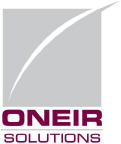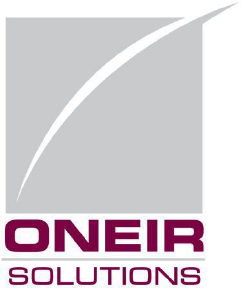Ton Holten began in the ceramic tile industry driving tile-laden tractor-trailers for a Dutch forwarding company from the far reaches of two continents back to his native Holland. In the 1980s, the Holten family moved to Canada and began Tilemaster, a retail and construction industry supplier in Aurora, Ontario, where it provides a vast array of metal, stone, slate and marble tiles, as well as countertops and related products.
Early on at Tilemaster, Holten moved company accounting from paper ledgers to the computer, where Vigilant point of sale and inventory control software helped Holten control his business for over 20 years. But faced with a growing demand for tile fueled by a boom in local house building and a healthy economy, Holten moved Tilemaster from its original location to another in Aurora and opened a second store in Barrie, about 25 miles away.
Upgrading to Our ERP Software
In 2005, Holten upgraded Tilemaster’s accounting software to Oneir Solutions Inc, a provider of scalable Enterprise Resource Planning (ERP) software that efficiently manages key business functions through one shared information database. But the new software runs on a modern-day Linux operating system, making it more capable of meeting the needs of an expanding business.
The software update included modules that provided added capabilities to cover additional business areas and automate functions that had previously been performed manually. Yet on the Windows workstations where Tilemaster staff make entries at the sales counter, in the warehouse, and in the back office, there was little need for re-training.
Jane Giggal, Oneir Solutions Inc. president, says, “We developed the upgraded software for growing businesses needing more capable, adaptable accounting and inventory control, and those with multiple stores or outlets.”
Holten appreciated the result of upgrading Tilemaster’s accounting system.
“By upgrading we were able to open and manage our new store in Barrie,” says Holten. “In the past, we did try a second store but had to re-enter the invoices from it by hand every night. Now with Oneir we’re always online with the new store in Barrie and can check stock, sales, and know what is going on in both locations up to the minute. We couldn’t have done that before.”
One of the reasons Holten implemented the ERP software system upgrade was to accommodate new storage for rapidly growing inventory in Aurora.
“Now we have a new 40,000 square foot warehouse,” says Holten. “To efficiently manage the 3,000 different kinds of tiles, we need to be very specific. We have to show on the invoices how many tiles the warehouse has to pick, so the order taker knows how many boxes and how many loose pieces he has to pick.”
To make that work, Holten needed additional controls over his inventory. So Oneir Solutions Inc. developed a “Tile Calculation” option available to clerks and other users at Tilemaster’s point of sale.
“When a Tilemaster customer orders so many square feet of tile, the clerk can access the Oneir software, which calculates the required number of pallets, boxes and individual tiles, rounded up to the nearest unit,” explains Giggal. “That ensures that all tiles get paid for and that the correct quantity is calculated – rather than leaving it up to a warehouse clerk to do the math.”
The software also shows on each invoice the weight of the order – so that the pallets of tiles shipped are not too heavy for the vehicles carrying them.
“The weight feature double checks that the amount ordered is the same as the amount shipped,” says Giggal. “That means the shipping department cannot mistakenly send an order of 100 boxes when it should have been only 100 pieces. This provides much tighter control over valuable yet vulnerable inventory assets.”
Giggal, given her background as a financial controller, has made sure that such controls have become a major part of the accounting software, which has helped to stem losses that were bleeding Tilemaster.
“Because the people in the warehouse used to have to make their own calculations on how much tile a customer needs, I estimate we were losing $2 – $3 on every order,” says Holten. “We fill 20,000 to 25,000 orders a year. By upgrading to Oneir we’ve avoided the mis-shipments of too many or too few tiles going out to a contractor and have recovered more than a year’s wages.”
Similarly, Holten uses the software’s order taking and invoicing capabilities to control costs and run Holten Impex International, the wholesale side of his business.
That’s not to say that the always practical Holten didn’t consider other software systems when making his expansion plans for his businesses.
“We did look at other accounting system suppliers,” admits Holten, “But their costs were way out of reach. Not just the initial costs but also the maintenance contracts were far higher. Even if their software were free, the fees we would have paid them over the year would have exceeded the total cost of Oneir, which is very affordable.”
Stories of gloom and doom in the new construction industry do not necessarily translate into sluggish business for tile dealers. Growth in an economic slowdown might seem counterintuitive but there are measures that dealers can take to maintain, and even improve, the bottom line. Upselling, using the right software, targeting the right markets, and providing exceptional customer service can help your productivity.
Although new residential construction is stagnant in many markets, the commercial real estate market continues to improve. Also, in the current environment, the renovation and remodeling business is a good place to look for growth potential.
The remodeling market
“We’ve experienced some sales drop in the new home market, based on the economy,” says Donna Triolo, showroom manager at Mid-America Tile. “On the other hand, business has really picked up on the other end. People are staying where they are and renovating.“
According to Leanne Barker, showroom manager at Antique Floors in Dallas, “We haven’t really noticed a slowdown in home sales yet. Our area was never hit with the skyrocketing prices, so we haven’t seen extreme changes.”
“Depending on our customers, and what market they’ve targeted, the slowdown could be an issue,” says John Zolman, sales and marketing manager for Miles Distributors in South Bend. “Some of them didn’t pay as much attention to the remodeling market when new home construction really took off. If they didn’t give as much time and effort to that part of the market, then some of the remodelers might have taken their business to the big box stores. Our customers are trying to get back those sales.”
Whether or not homes are selling well in your area, people may be nervous about spending right now. Homeowners may not necessarily be ready to commit to re-doing the whole house at once. So, this is a good time to remodel just one bathroom or the kitchen. Triolo, whose showroom is in Elk Grove, Illinois, says, “In my market, we are seeing a lot of remodels and add-ons.”
With the housing market slowing, people who might have considered moving may be thinking of just staying in their current home and fixing it up. These folks are likely to want to customize their home since resale is no longer their top priority.
ERP Software for Wholesale Distribution Management
Contact us to learn more about how you can expand your business with EPR Software.


